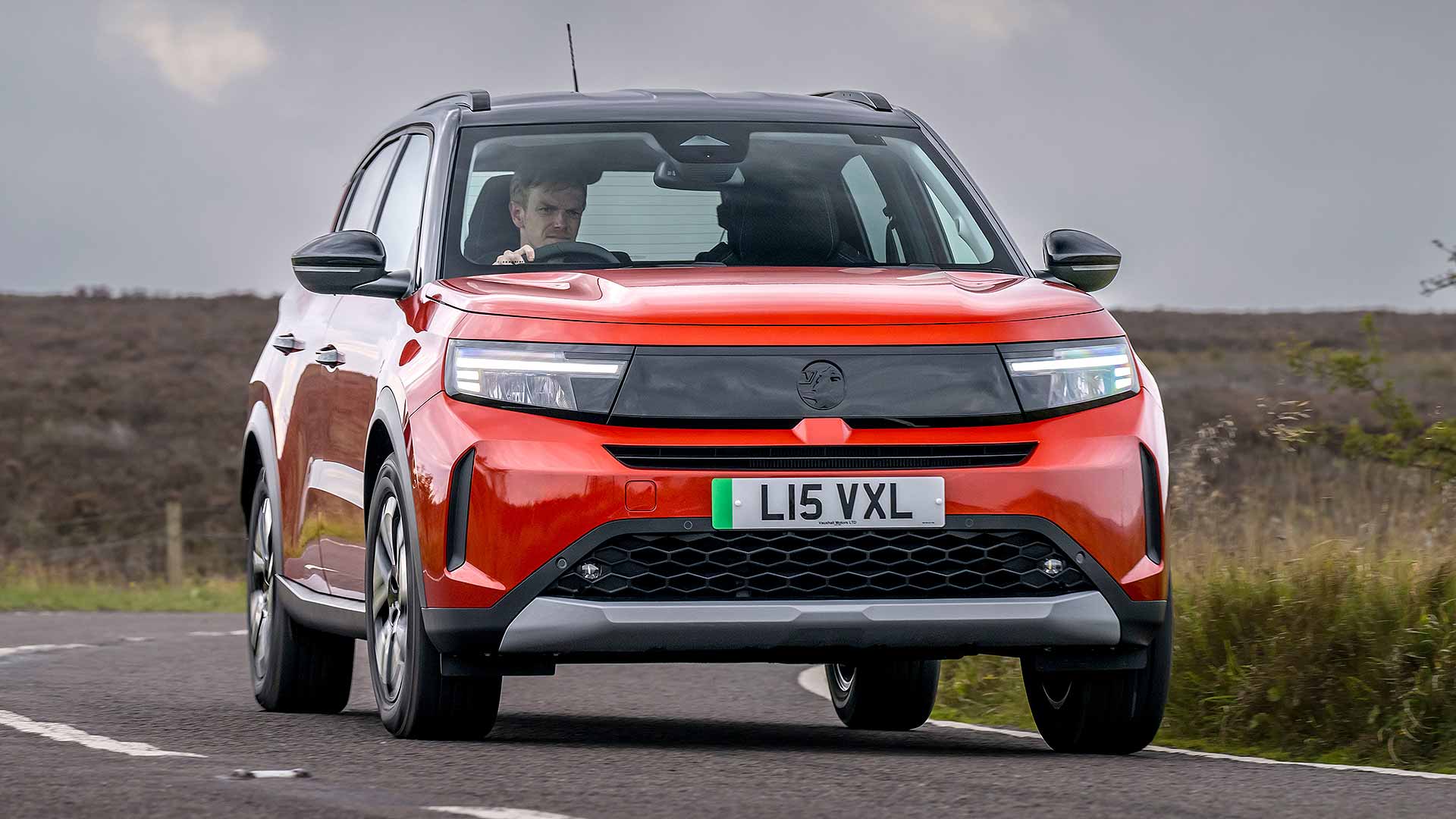The Vauxhall Frontera is going to be an important car for the British brand. The aim is for it to become Vauxhall’s second best-selling new car, after the Corsa.
Rather than majoring on flashy styling or lifestyle stuff, the Vauxhall Frontera goes big on practicality and value. Size-wise, it’s positioned between the smaller Mokka and larger Grandland; at just under 4.4 metres, it’s similar in length to the Astra. And crucially, it’s cheaper than all three.
Vauxhall Frontera prices start from just £22,495. Remarkably, that’s for the 44kWh Frontera Electric, too – if you want the alternative Frontera Hybrid, that costs from £24,855. Vauxhall is helped by the Frontera Electric qualifying for the £1,500 Electric Car Grant – but even before the ECG, the electric Frontera is still cheaper than the hybrid.
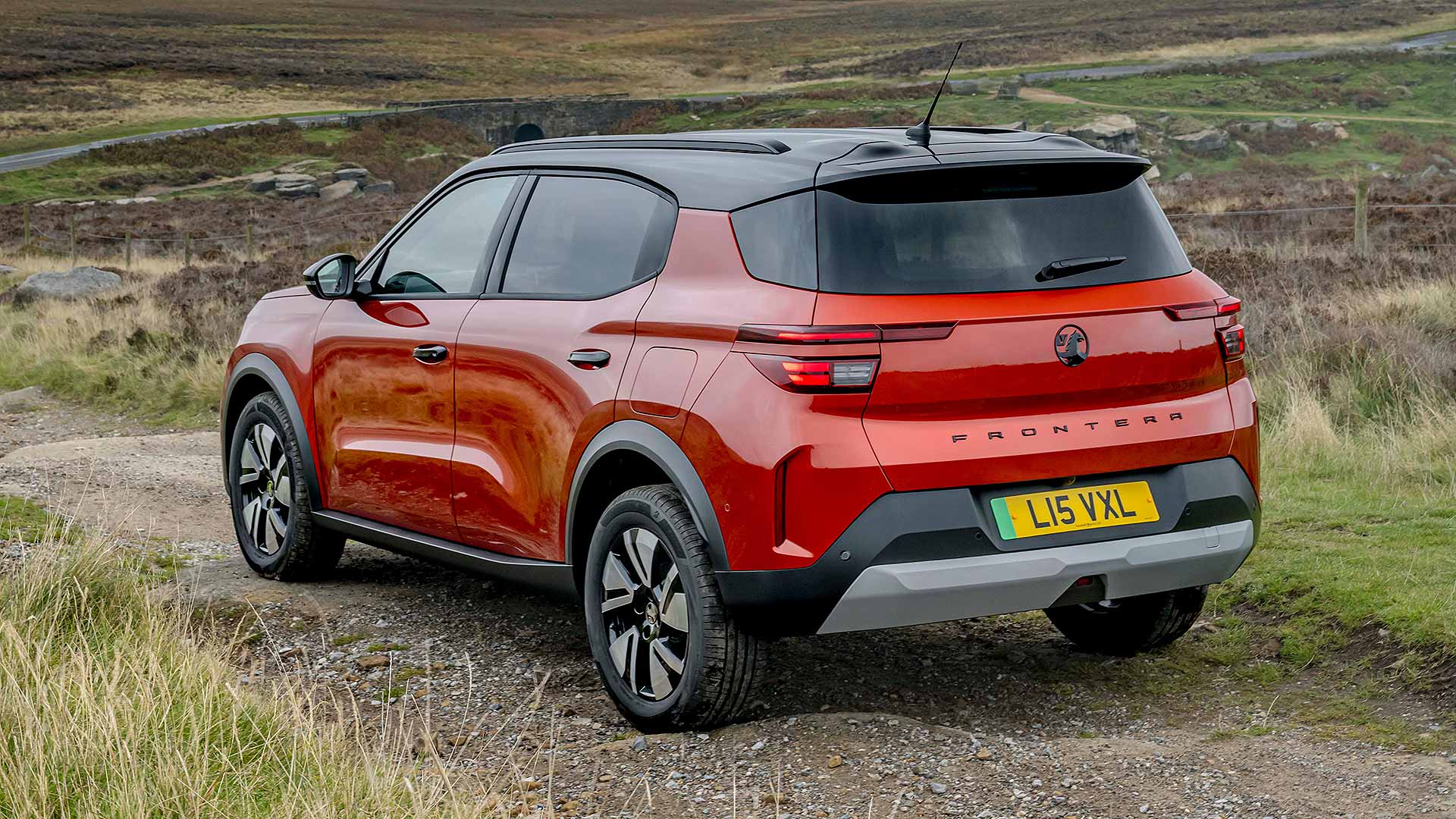
That is for an EV with a 186-mile range, mind. It’ll be fine for those who stick to the city, but if you want the reassurance of the 54kWh battery’s 249-mile range, prices for that start from £25,995. Although that’s still only £1,140 more than the hybrid – and thanks to Vauxhall’s ‘electric all in’ bundle, charging will be cheaper than buying petrol. It’s cheap to lease, too.
What about the name? Yes, it references the original 1990s Vauxhall Frontera, which was a rather utilitarian 4×4 that sold well regardless. Unlike Ford with the Capri, Vauxhall wisely doesn’t go overboard with the heritage aspect, simply pointing to a couple of styling cues (such as the rear pillar) that mimic the original. The name brings familiarity, without being kitsch; perfect.
Rivals include the Ford Puma Gen-E (it qualifies for the full ECG, meaning prices start from £26,245), the closely-related Citroen C3 Aircross, retro-look Renault 4, Peugeot e-2008 and BYD Atto 2.
The design is neat, with the smart black ‘Vauxhall vizor’ front end giving it a modern look. It’s a bit more vanilla from the side, but the crossover SUV profile still has a decent stance, and there’s nothing here to scare anyone off.
The range is simple – Design, GS and Ultimate trim – and there are only two options. On Design, you can have a styling pack that includes a white roof and Land Rover Defender-style white wheels. It looks fab. On GS and Ultimate, there’s the novel option of seven seats, with a third row in the rear. Extra practicality for just £550, although it’s only available on the Frontera Hybrid.
On an autumnal day in Wiltshire, I got behind the wheel of both the Vauxhall Frontera Electric and the Vauxhall Frontera Hybrid. Given the pricing advantage, I concentrated on the EV, but will bring you my thoughts on the hybrid model too.
Driving the Vauxhall Frontera
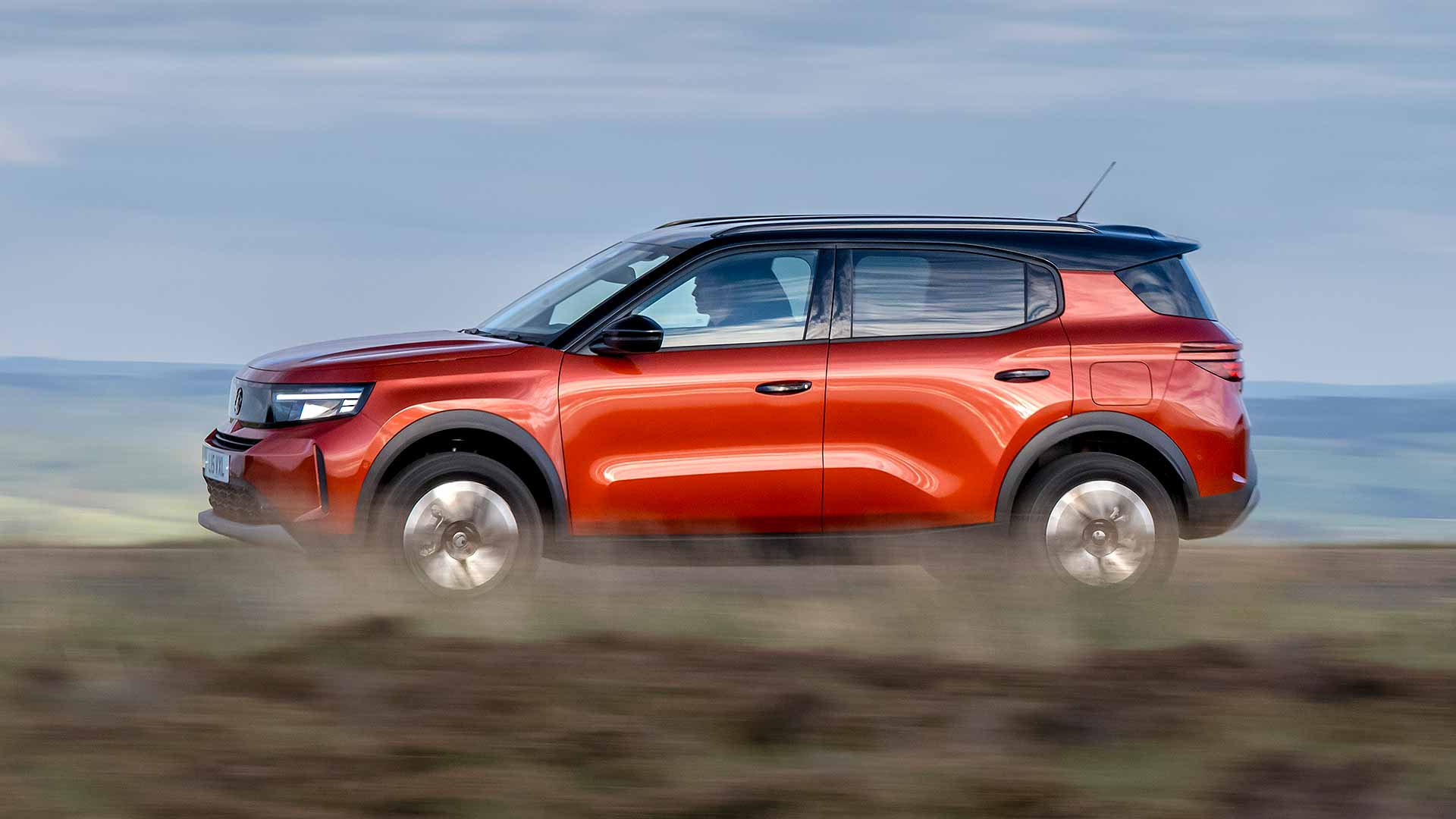
I drove a Vauxhall Frontera Electric with the 44kWh battery. It wasn’t fully charged when I got it, but a bit of maths suggests a total range of 156 miles, compared to the claimed 186-mile figure. Given the weather and some energetic driving by journalists, I though this was reasonable. The test cars lacked an energy consumption readout, but this is coming later; the spec sheet suggests a slightly so-so 3.4 miles per kWh.
It’s not the fastest EV by any means. Those used to startling Tesla-like acceleration will be puzzled by the genteel accelerator response and 0-62mph performance in 12.8 seconds. But, on the move, it has enough pulling power to feel easy-going – and, apart from a faint motor whine, it’s lovely and quiet in town. This refinement helps it feel posher than most other £22,495 cars. It’s a shame wind noise starts to get more noticeable above 60mph, though.
Vauxhall sets up the suspension of its cars to be stable and safe, even at higher speeds. The Frontera has a firmer ride in town than some as a result. It’s not crashy or harsh, but you’re aware of the patter from the road surface below. This pays dividends through bends, where it feels steady and secure – it doesn’t lean excessively or make passengers feel queasy.
The hybrid is a likeable car too. It feels a bit lighter on its feet (it weighs 171kg less) and has a purer, more natural steering feel. It does a decent job of sticking in EV mode at lower speeds, and you can feel the electric motor taking the load off the engine when accelerating. I averaged around 49mpg, which I thought was decent.
A quaint touch is the fact you start up both versions by a twisting a key, rather than a pushing a button.
Inside the Vauxhall Frontera
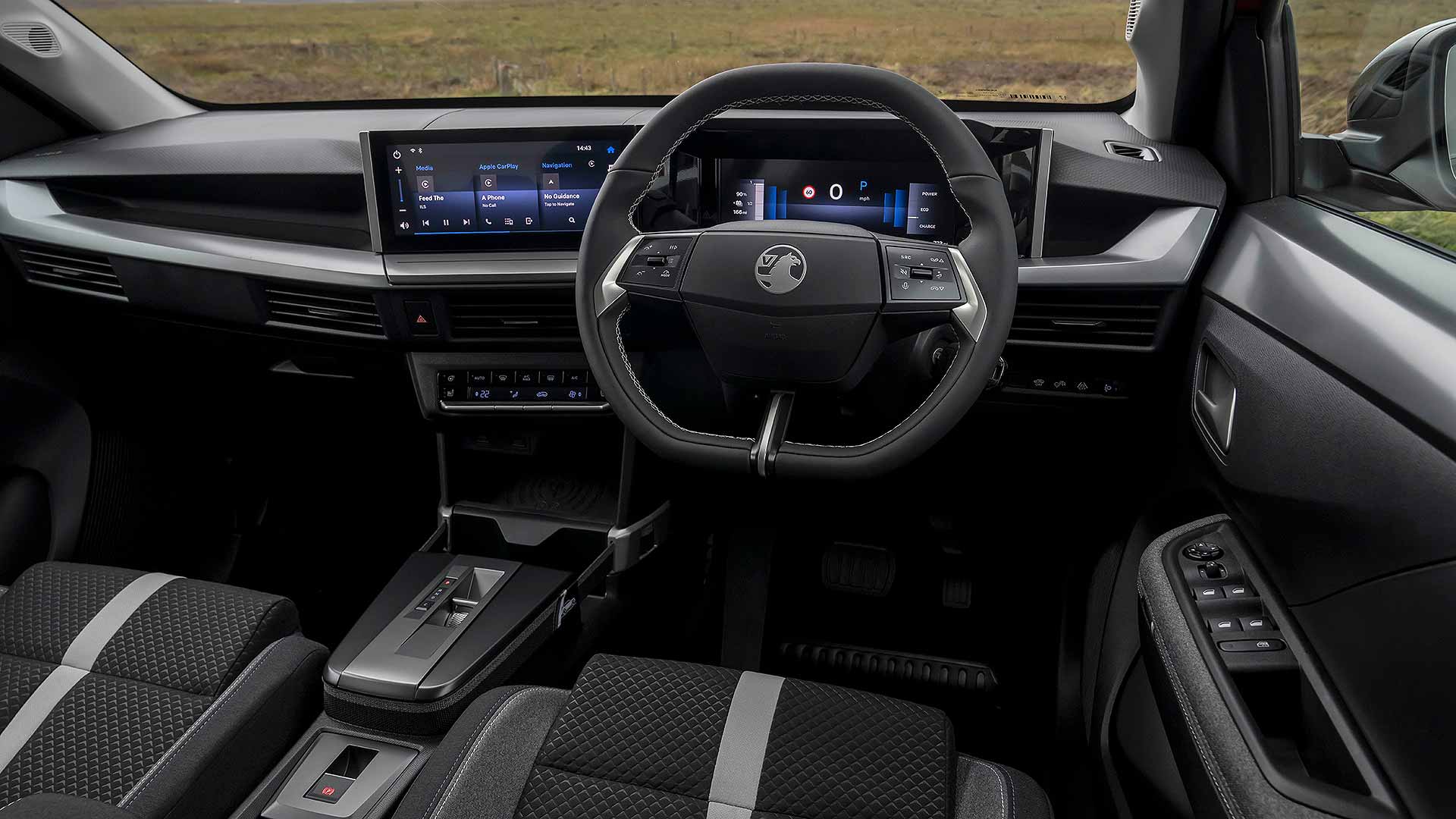
The Vauxhall Frontera has that SUV-like driving position that so many motorists like. It has a high bonnet, and a tall dashboard, and it feels very spacious to sit in (headroom is particularly generous). It’s a bit plasticky, and you can tell where costs have been cut to bring the price down, but I like how Vauxhall hasn’t penny-pinched with the steering wheel – it’s a delight to hold.
All models get the Vauxhall ‘PureConnect’ infotainment system, with dual 10.0-inch screens, the centre one a touchscreen. It does all you require, and has wireless Apple CarPlay and Android Auto. Impressively all models also get a wireless smartphone charger.
There are physical heater controls too – both for the air con on Design, and (single zone) climate control on GS and Ultimate. However, while there’s an electronic parking brake, I couldn’t find an auto-hold button for traffic lights.
There’s the usual plethora of safety assist tech, but Vauxhall has buttons to disable these too. Interestingly, I left the speed limit assist warning turned on, and actually found it quite useful. The bleeps weren’t too loud or incessant, and I liked how it gave a discreet bleep to tell me the speed limit had changed. Maybe this stuff can be useful after all, when done right.
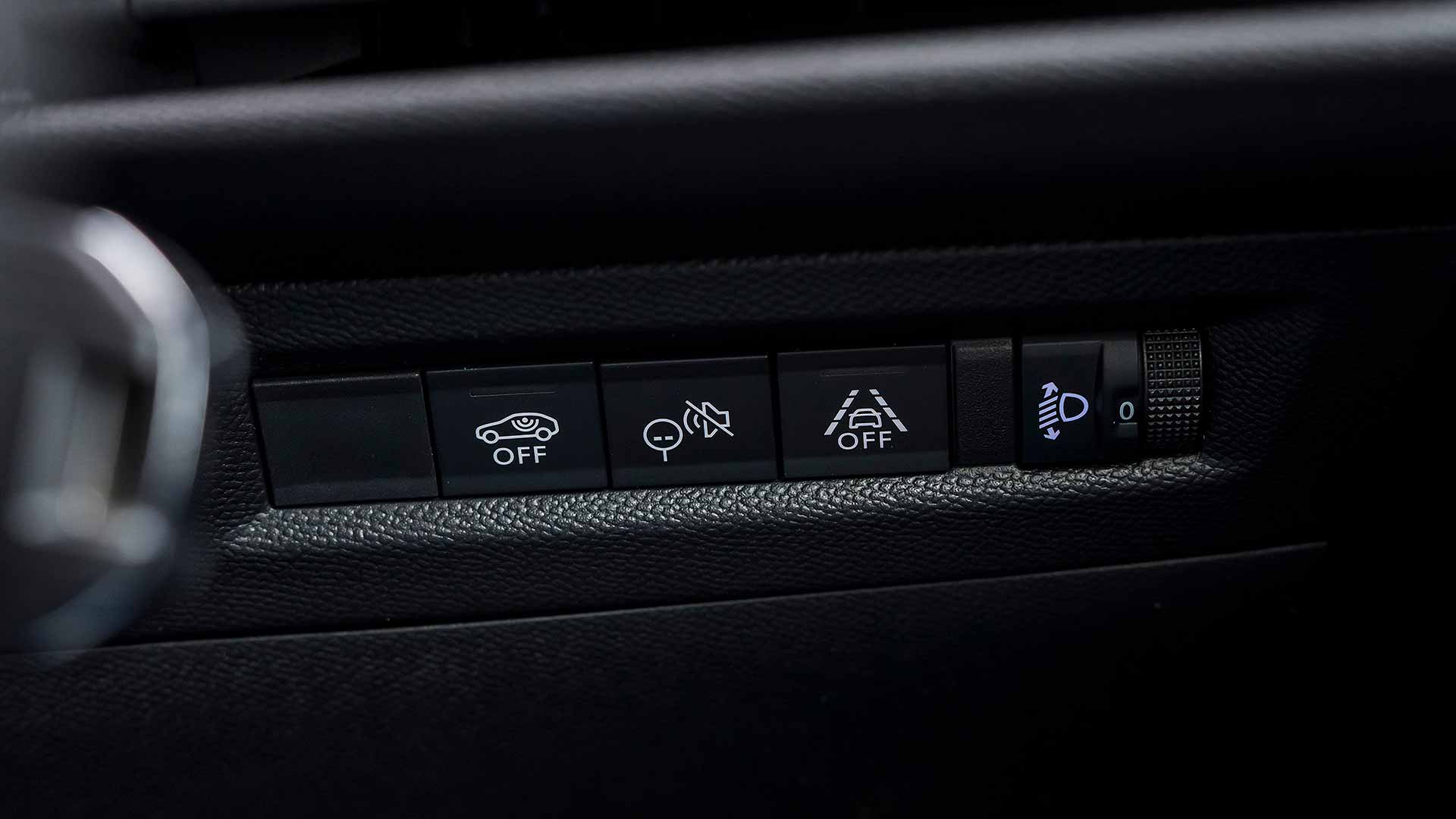
Vauxhall always does great seats and there are no complaints here. They’re firm and supportive, with GS models getting fancier ‘intelli-seats’ and Ultimate adding heated seats (along with steering wheel and windscreen). There’s loads of space in the back too, with acres of legroom and a wide, comfortable bench seat. It’s appreciably roomier than the Astra back there.
The only grumble is that Frontera Electric models have a higher floor, due to the EV battery below. This leaves passengers feeling slightly perched, with their knees in the air. The Hybrid is comfier in this regard. Oh, special mention to the door openings too – they’re really tall, so it’s a breeze to step in and out, both front and rear.
I’ve seen the third row of seats at a motor show, and they are, as you’d expect, tiny. They should be ideal for squeezing in a few more children though, and add a USP to this practical SUV at an affordable price.
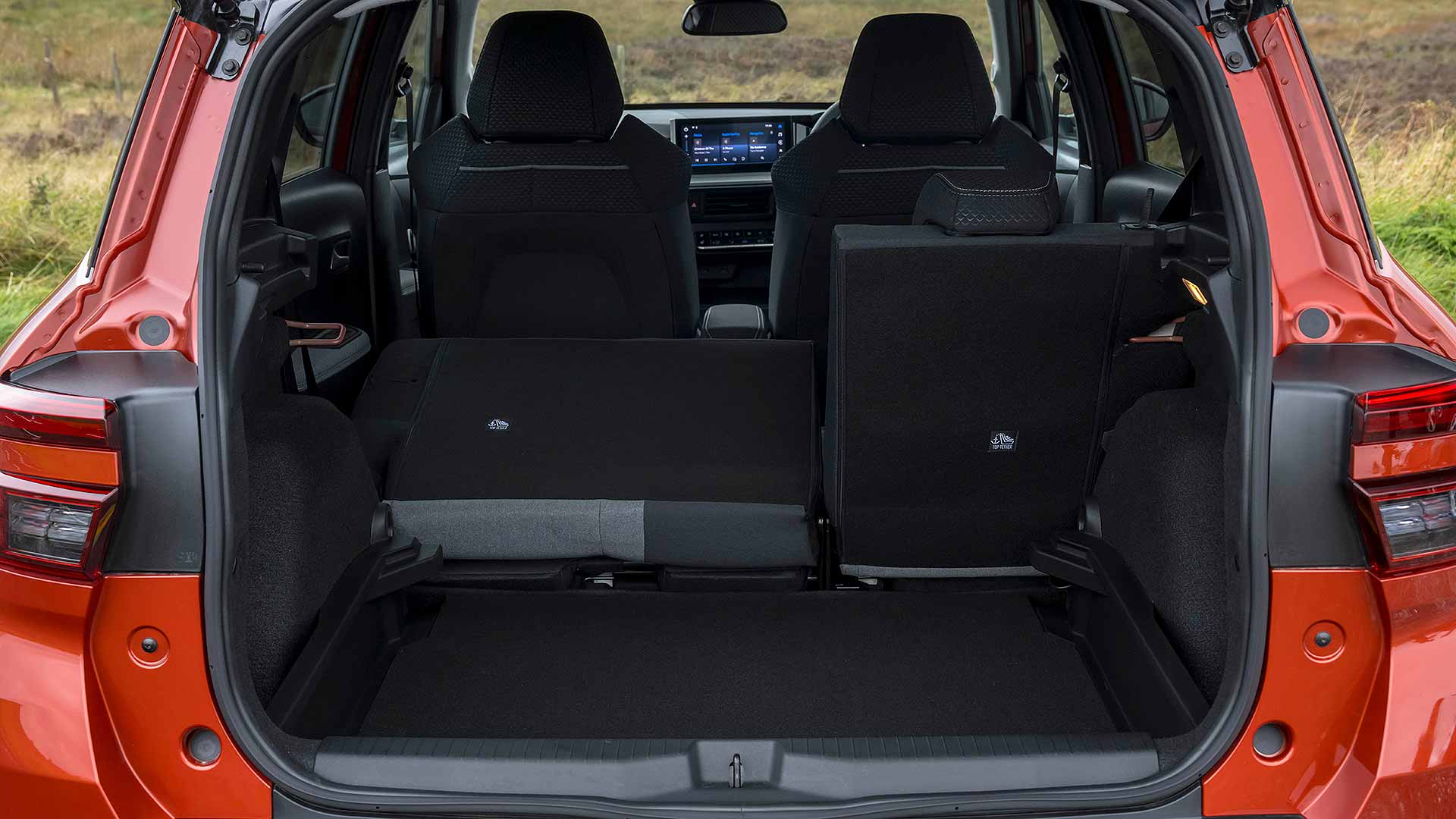
The boot is huge, with 460 litres of well-shaped, wide and practical space. The Frontera Electric has the same space as the Frontera Hybrid, unless you choose the seven-seater, where it drops to a still-decent 370 litres. With the seats folded, there’s a cavernous 1,600 litres of space.
Vauxhall Frontera review verdict
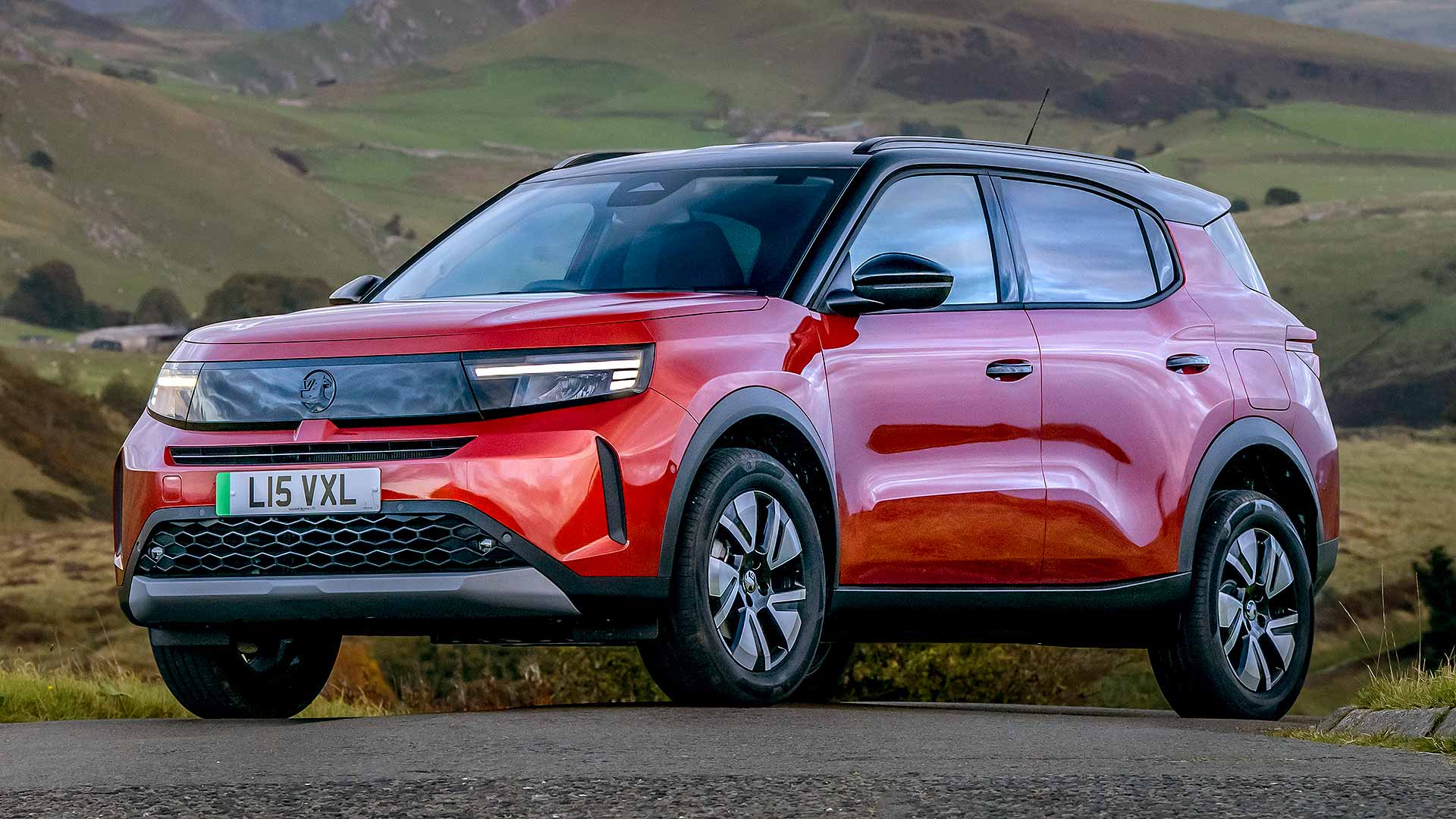
The Vauxhall Frontera isn’t a thrill-seeker, but doesn’t set out to be. Rather than invigorating the driver, it aims to be a dependable family all-rounder, offering standout space and practicality at a cut-price cost. For this, it deserves praise, and is worthy of a place on your shopping list.
As so many new cars seem to get ever-more expensive, Vauxhall is bucking the trend – and, what’s more, it’s offering an EV for less than the price of a petrol hybrid. That’s something I can get behind, and is why the firm’s aim of the new Vauxhall Frontera becoming its second best-selling car may quickly start to bear fruit.
